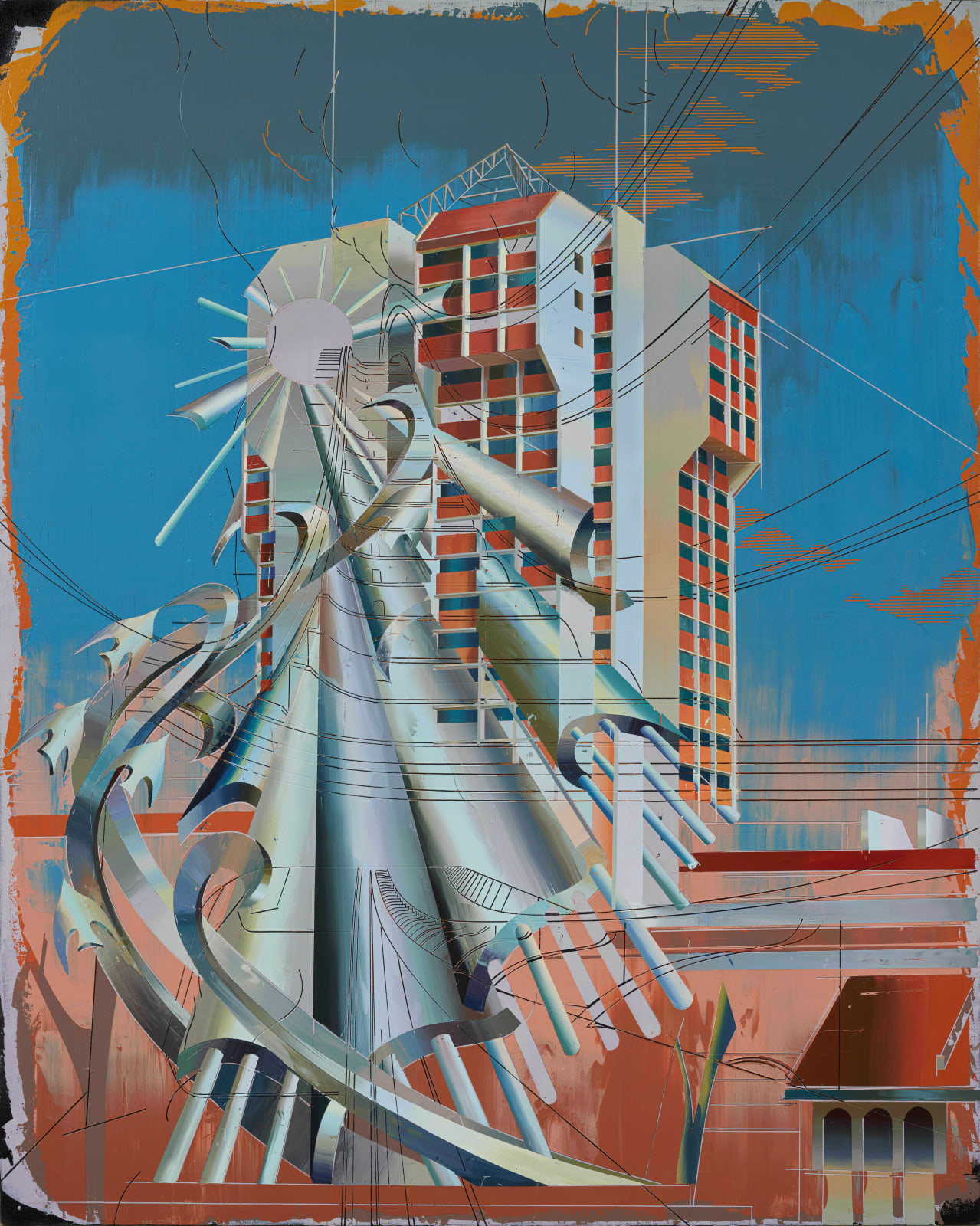




Cui Jie
Rowell Court, Singapore, 2020
Acrylic on canvas
200 x 160 cm
78 3/4 x 63 in
78 3/4 x 63 in
Copyright The Artist
Further images
'The sculptures in the paintings are models and sketches provided by Chinese sculpture factories to their clients. Most of these sculptures will eventually be placed in squares in city centres....
"The sculptures in the paintings are models and sketches provided by Chinese sculpture factories to their clients. Most of these sculptures will eventually be placed in squares in city centres. The sketches are anonymously made, and I tend to think of them as a kind of Shanzhai work that is either Modernist or Futurist in style. The professionals who make these often combine various futuristic elements, or add and exaggerate certain features. This Shanzhai logic is also discernible in numerous architectures in China. Byung-Chul Han understands Shanzhai as a unique Chinese form of deconstruction.
Since the architectures are all covered by curtain walls or reflective materials, the buildings are like mirrors, recording lights and airs in the surroundings. by reversing the process I colour the backgrounds.
I have never been to the cities aforementioned, but the buildings all seem familiar to me, as if I had seen them in Beijing or Shanghai before they were torn down. In the last four decades, in the rapid urbanisation movement, buildings as such become very short-lived. Therefore, remembering the past becomes an act that could only be supported by imaginations. The term in English nostalgia comes from two Greek words, nostos and algia: yearning for a home that no longer is or never was.
The Rowell Court is a group of buildings in the Central Area of Singapore, built in 1984. In 1960s, after the establishment of the bureaucratic and legal institutions necessary for the urban reform, the Central Area that has a history of 150 years was transformed drastically. The Singapore government and the press described the Area as 'populated with ghettos, and required urgent work to keep the residents from suffering.' Some press even went as far as claiming that 'Singapore was the first city totally free from ghettos and urban regeneration problems in Asia, now that the skyscrapers marched into the heart of the old town, replacing the tiny, shaky, nightmarish buildings.' As a result of the reform, some thousand residents moved into the newly built Rowell Court, but most moved out of the Central Area." - Written by Cui Jie, translated by Ken Adams
Since the architectures are all covered by curtain walls or reflective materials, the buildings are like mirrors, recording lights and airs in the surroundings. by reversing the process I colour the backgrounds.
I have never been to the cities aforementioned, but the buildings all seem familiar to me, as if I had seen them in Beijing or Shanghai before they were torn down. In the last four decades, in the rapid urbanisation movement, buildings as such become very short-lived. Therefore, remembering the past becomes an act that could only be supported by imaginations. The term in English nostalgia comes from two Greek words, nostos and algia: yearning for a home that no longer is or never was.
The Rowell Court is a group of buildings in the Central Area of Singapore, built in 1984. In 1960s, after the establishment of the bureaucratic and legal institutions necessary for the urban reform, the Central Area that has a history of 150 years was transformed drastically. The Singapore government and the press described the Area as 'populated with ghettos, and required urgent work to keep the residents from suffering.' Some press even went as far as claiming that 'Singapore was the first city totally free from ghettos and urban regeneration problems in Asia, now that the skyscrapers marched into the heart of the old town, replacing the tiny, shaky, nightmarish buildings.' As a result of the reform, some thousand residents moved into the newly built Rowell Court, but most moved out of the Central Area." - Written by Cui Jie, translated by Ken Adams




